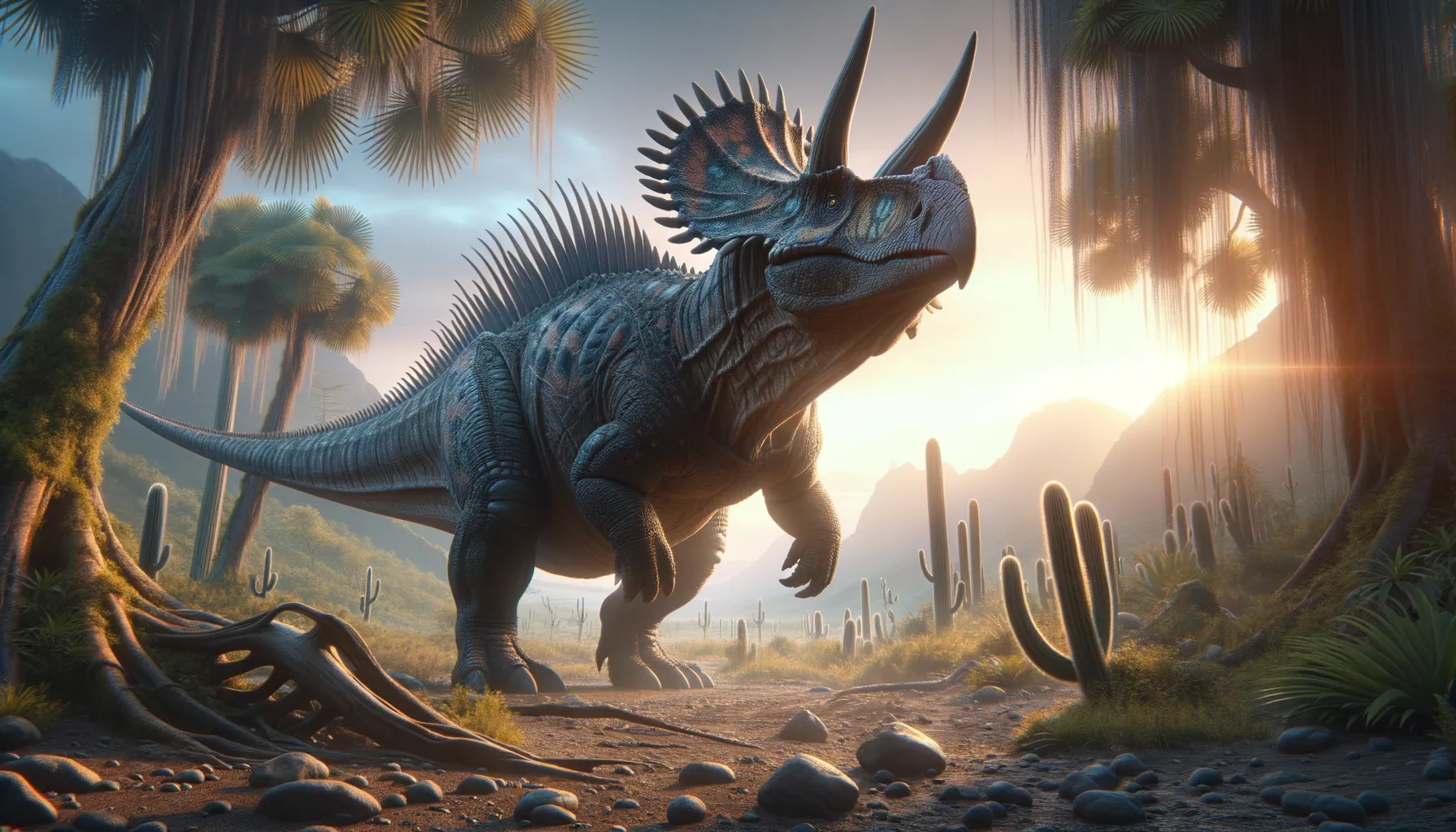
Jinyunpelta
Armored and ready for anything.
Period
triassic
Length
Measured up to 5 meters long.
Height
Stood approximately 1.2 meters tall.
Weight
Weighed around 1.5 to 2 tons.
Jinyunpelta is a genus of ankylosaurian dinosaurs that roamed the landscapes of what is now China during the Cretaceous period. Known for its armored body and club-like tail, this dinosaur was well-equipped for defense against predators. As one of the earliest ankylosaurs to have a tail club, Jinyunpelta provides key insights into the evolution of these unique appendages.
Diet
Jinyunpelta was herbivorous, feasting primarily on low-lying plants and vegetation. Its diet likely consisted of ferns, cycads, and other soft, leafy materials available in its environment.
Hunting
As Jinyunpelta was not a predator, it did not engage in hunting. Instead, it foraged for plant material, relying on its keen sense of smell to locate food.
Environmental challenges
Living during the Cretaceous period, Jinyunpelta faced challenges from predators like theropods. It inhabited environments prone to seasonal changes, which affected the availability of food. Natural disasters, such as volcanic eruptions and changing sea levels, also presented threats to its survival.
Speed
Slow-moving due to its heavy armor.
Lifespan
Estimated to live for several decades.
First discovery
Discovered in Zhejiang Province, China in 2013.
Fun Facts
- Jinyunpelta is a type of ankylosaur, which is known for its armored body and club-like tail.
- It was discovered in the Jinyun County of Zhejiang Province in China, which is how it got its name.
- Jinyunpelta lived during the Early Cretaceous period, around 100 to 125 million years ago.
- This dinosaur had a unique set of bony armor, also called osteoderms, which protected it from predators.
- Unlike some ankylosaurs, Jinyunpelta's tail club was not as well-developed, hinting at different defensive strategies.
- Its discovery has helped scientists understand more about the evolution and diversity of ankylosaurs in Asia.
- Jinyunpelta likely roamed in lush green environments, feeding on plants with its beak-like mouth.
Growth and Development
Jinyunpelta experienced a slow growth rate, typical of many large herbivorous dinosaurs. Its development was marked by the gradual formation and hardening of its bony armor. Juveniles were likely more vulnerable to predators until they developed enough armor for protection.
Habitat
Jinyunpelta lived in a forested environment with plenty of vegetation. It thrived in areas with a mild climate and abundant plant life, which provided a consistent food source. The region's diverse flora supported its herbivorous lifestyle.
Interaction with other species
Jinyunpelta coexisted with various dinosaur species, some of which were potential threats. It likely lived in small groups or pairs to increase protection against predators. Other herbivores in its habitat might have competed for food resources.
Natural lifespan
Jinyunpelta had a natural lifespan of about 20 to 30 years.
Reproduction
Jinyunpelta laid eggs, likely in nests constructed on the ground. It is believed that, like other ankylosaurs, the parents provided minimal care once the eggs were laid. Hatchlings needed to rely on instinct and camouflage for survival.
Social behaviour
Jinyunpelta may have had a solitary or semi-social lifestyle, occasionally foraging in groups to deter predators. Communication among individuals could have involved auditory or visual signals for coordination.
Fossil locations
Fossils of Jinyunpelta have been primarily found in the Jinyun County of Zhejiang Province, China. These discoveries have provided valuable insights into ankylosaur evolution and contributed significant knowledge to paleontological research.
